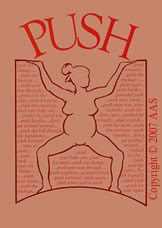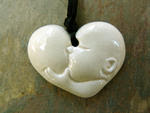A study was conducted of 4,054 Missouri home births occurring from 1978 through 1984. Of the 3,645 births whose planning status was identified, 3,067 (84 per cent) were planned to be at home. Neonatal mortality was elevated for both planned (17 observed deaths vs 8.59 expected deaths) and unplanned home births (45 observed vs 33.19 expected) compared with physician-attended hospital births.
Nearly all of the mortality excess for planned home births occurred in association with lesser trained attendants (12 observed vs 4.42 expected), while for unplanned home births the excess was entirely among infants weighing 1500 grams or more (19 observed vs 3.50 expected). For planned home births attended by physicians, certified nurse-midwives, or Missouri Midwife Association recognized midwives, there was little difference between observed and expected deaths (5 observed vs 3.92 expected)**.
There also was little difference in deaths for unplanned home births weighing less than 1500 grams (26 observed vs 29.69 expected) compared with hospital births. The study provides evidence of the importance of having skilled attendants present at planned home births.
Safe Birth Partners:
This study is showing similarly what ever study debated on Homebirthdebate.blogspot.com is showing -- that homebirth is safer than hospital birth when the attending caregiver is a qualifed and trained. Now, it is time to look at the dismal statistics of the hospital birth and the long-term consequences to the human baby when unnecessary medical protocols and interventions are imposed upon women and babies who do not need them.
Note: Schramm is the former bureau chief for statistics in Missouri.








2 comments:
It is well known to those of us who have had home births that the outcomes can be just as good if not better than in the hospital. This study shows that a trained attendant is of great importance no matter where the mother chooses to give birth. It also shows that some states that are considered "behind" the times have better outcomes than the rest of the country. There is an important lesson to be learned here, IMHO. Planned birth with a skilled attendant is all that is needed for a satisfactorily safe outcome. The place where the skilled attendant supervises the birth is of very little importance!
Thank dh. I absolutely agree with you. This is why my mission is to bring focus to look at what happens to the baby in the hospital environment BECAUSE OF the MISUSE of drugs, technology, and interventions.
The brain research of the nineties clearly shows us that fear, chaos, and threat can literally change the makeup of the brain in a frightened child. It is quite clear about the affects of narcotics on an adult or child brain, body, and behavior.
Once we get that early experience impacts the brain so profoundly we
think logically look at the experience of prenatal environmnet and labor and birth experience as THE defining experience, short as it may be relative to gestation and life. Consider our violent, drug addicted society and how 90% of American's born under the influence of drugs and with extreme invasive treatment by otherwise caring, professional people.
A human being is profoundly affected by his or her birth -- bottom line.
Post a Comment